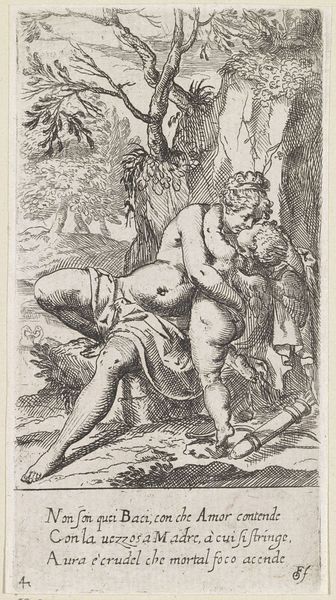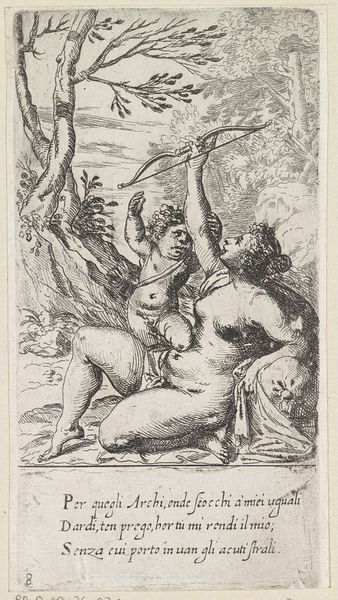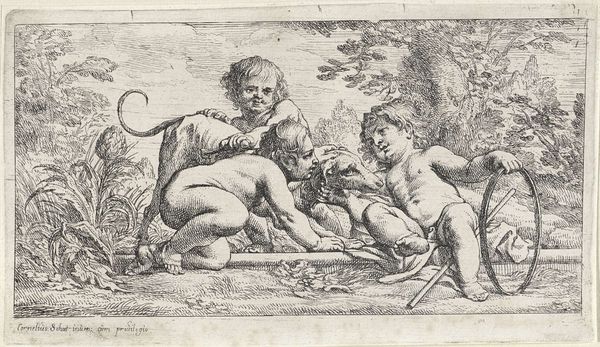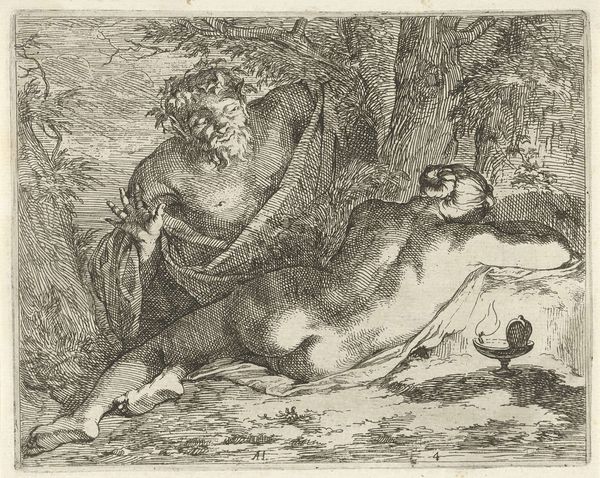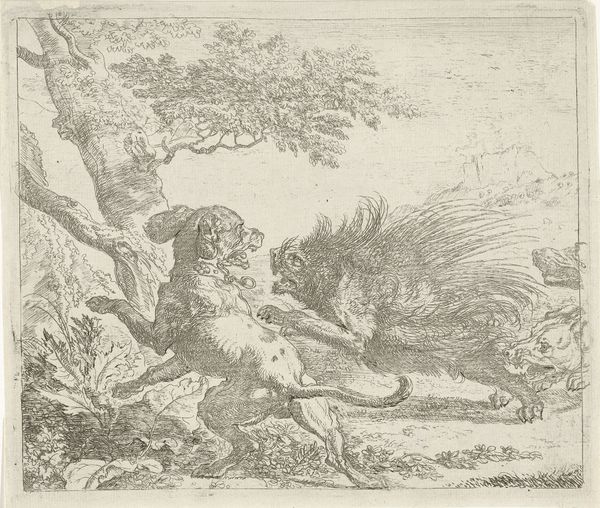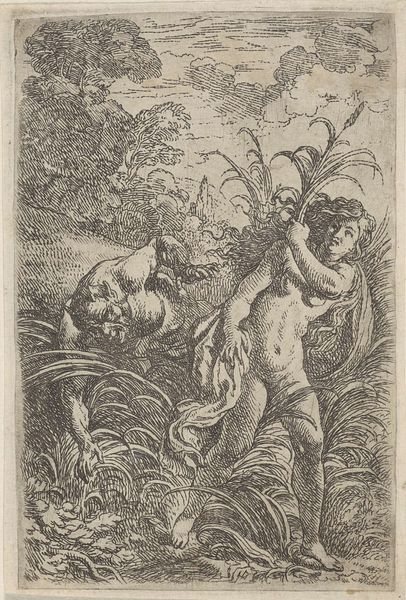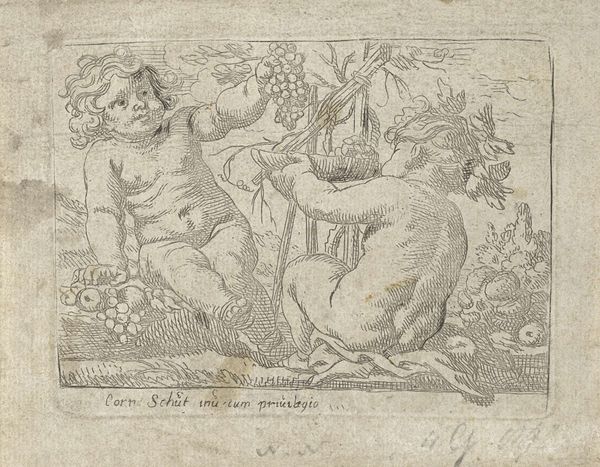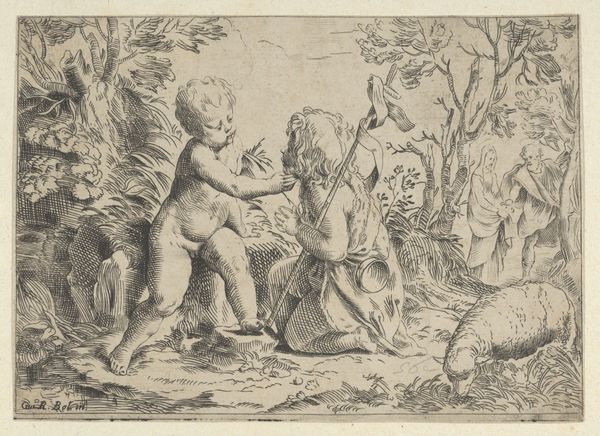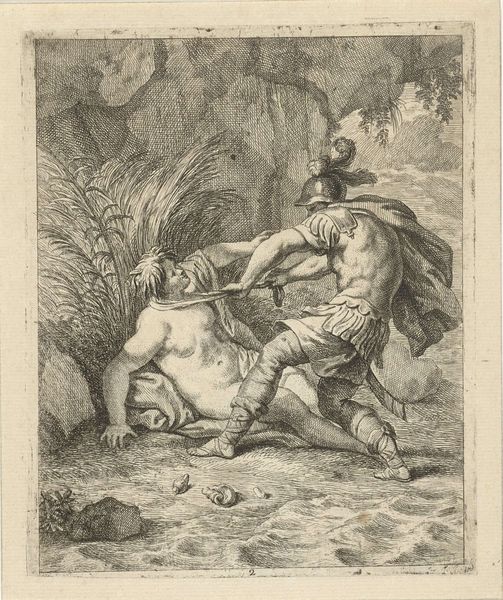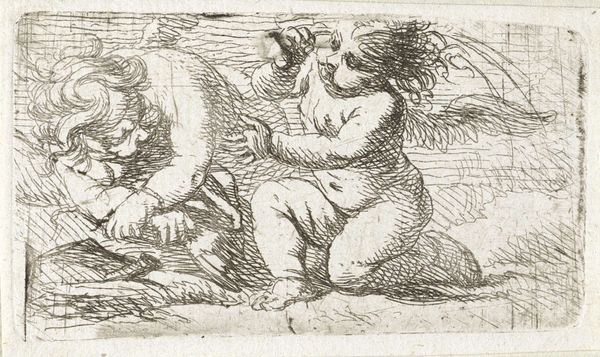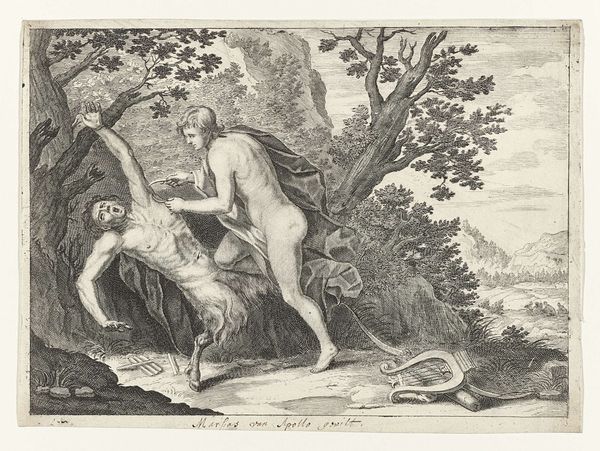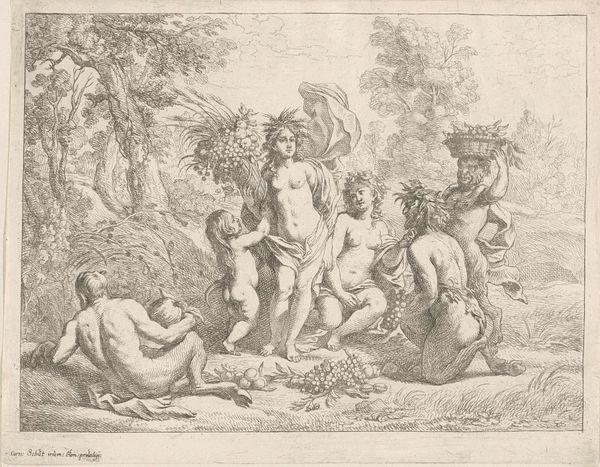
drawing, etching
#
drawing
#
light pencil work
#
quirky sketch
#
baroque
#
etching
#
pencil sketch
#
landscape
#
figuration
#
personal sketchbook
#
sketchwork
#
pen-ink sketch
#
sketchbook drawing
#
nude
#
sketchbook art
#
fantasy sketch
#
initial sketch
Dimensions: height 72 mm, width 100 mm
Copyright: Rijks Museum: Open Domain
Cornelis Schut created this etching, titled "Nymph with Two Satyrs in a Landscape," sometime in the first half of the 17th century. Schut lived in a world where the legacy of classical antiquity was palpable. It is hard to ignore the male gaze present in this depiction. Two satyrs, creatures from classical myth who were known for their lust, are watching a nymph. Her raised arm could be interpreted as a gesture of resistance. The forest or landscape setting is, of course, a classical trope for encounters of this kind. But what does it mean to picture these encounters, and what feelings do they evoke? Rather than maintain traditional representations, Schut’s etching develops a narrative that stirs a cauldron of societal issues, reflecting the position of women in 17th-century society. It's a reminder of the emotional and personal dimensions embedded in historical narratives.
Comments
No comments
Be the first to comment and join the conversation on the ultimate creative platform.
